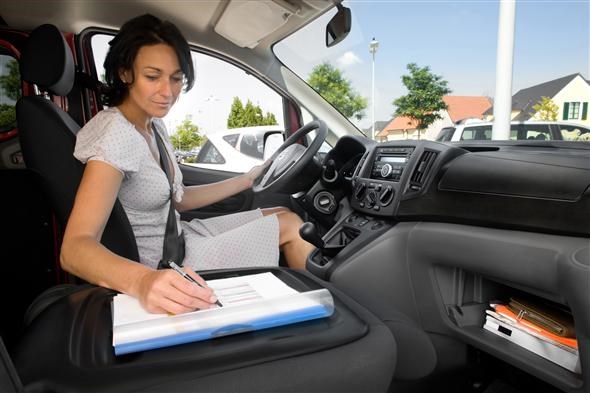Getting insurance for your van can be an unpleasant experience but help is at hand.
It’s all about cutting through the swathe of information. If have an accident or your tools get stolen you need to know that you are covered properly and if you’re not because you bought the wrong policy you could be in for a nasty, and costly, shock. That’s why it’s important to make sure that you know exactly what you need from your insurance.
Van policies are, for the most part, the same as standard car policies. Insurers ask the same kind of questions that you’d be asked when applying for a car policy, such as mileage and type of usage.
There are, however, a few additional questions – such as whether your van has any signage, or if you’ll be carrying hazardous materials. Some companies even give a discount if you have a ‘bad driver’ hotline sticker on the van.
The insurer will also ask for the details of your van, as per a car insurance policy. Vans have insurance groups, much like cars, and insurers will take the weight, size and payload into consideration – along with the usual factors like cost of repairs, power and value.
Read on to find out exactly what you need to bear in mind when you’re considering a van insurance policy.
Cover types:
Third Party Only (TPO): The minimum level of cover needed to legally drive on the road. Your insurers will cover the damages to others involved in an accident with you, but they will not pay for any losses or damage you incur.
Third Party, Fire and Theft (TPFT): This higher level of cover also protects against damage caused by fire and theft, or attempted theft.
Comprehensive: The highest degree of cover. As well as including TPFT cover, your insurer will also pay for the cost of any repairs to your vehicle caused by accidental or criminal damage.
Goods or tools cover:
There also two other important considerations when looking for van insurance. Most policies will not cover the contents of your van, or your tools. To cover these, additional features usually have to be added to a policy, at extra cost. So, don’t forget to ask and don’t assume that the cover is included as standard. There are two distinct types of additional cover:
Goods in Transit
If you’re delivering goods, tools or materials, then you’ll need ‘Goods in Transit’ insurance. This means insurers will pay out if the van’s contents are stolen or damaged. This is an essential if you’re acting as – or employing – a courier, a haulier, or you just deliver your own goods. Most major insurers offer Goods in Transit cover as an extra to any conventional policy and it can be personalised to suit your application. Some companies will require that any goods are removed from the vehicle at night.
Tool insurance
Many van drivers or owners leave tools in the vehicle overnight. These tools, which can be worth thousands of pounds, are not usually covered on a standard insurance policy. That means that you could be left severely out of pocket if the van is stolen or involved in an accident that damages its contents. Tool insurance usually covers equipment and stock that’s in any van on the policy and sometimes includes additional cover for personal effects and packing straps and materials.
It’s worth bearing in mind that some insurers classify tool insurance as Goods in Transit – so it’s best to check with your policy supplier. Most policies also limit the maximum claim value for tools, or limit the maximum claim per tool, so make sure that you’ve an appropriate policy that suits your needs.
Don’t forget to check any special conditions from your insurer – such as if an alarm system is required, whether any special storage is required or if cover only operates for a set period each day.
Other considerations:
It’s important to check the level of excess set on the policy. The compulsory excess is the amount that you have to contribute in the event of a claim. The voluntary excess is the amount of money you pay towards a claim for damage to your own vehicle. You can usually opt for a higher voluntary excess to decrease the cost of your policy.
No claims bonus from a van insurance policy can sometimes be transferred from, or to, a private car policy. So, if you’ve recently started driving a van and no longer have a car of your own, it’s worth asking your insurer if you can carry the no claims bonus across. That will help drive the price of your premium down considerably. Even if an insurer doesn’t accept private no claims bonus, or van no claims, it’s worth mentioning how many years you have – they may take that into consideration.
Lastly, if you’re ever uncertain about something, don’t be afraid to ask your insurer. They will be able to tell you exactly what you need to know and make sure that your policy is appropriate for your use.
To get an insurance quote click here.
Just so you know, we may receive a commission or other compensation from the links on this website - read why you should trust us.




